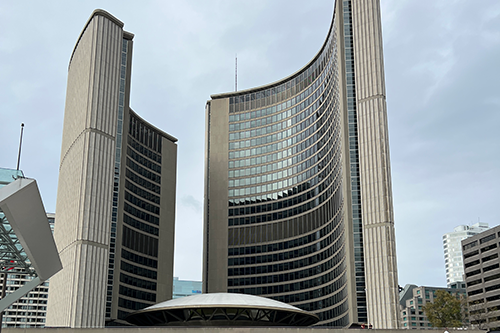MY BOOKMARKS
Saved places you've explored.

Brandenburg Gate
Berlin, GERMANY
The Brandenburg Gate is one of Berlin's most important monuments, a landmark and symbol with over two hundred years of history. Hardly any other sight is on so many tourist selfies as the great sandstone gate in the heart of the city. The Brandenburg Gate used to be memorial of division - after the construction of the Berlin Wall, it was located in the restricted area and could not be visited by East or West Germans. After the fall of the Wall, the gate became a symbol of German unity. Berlin owes the Brandenburg Gate to King Frederick William II, who had commissioned the large sandstone gate as a dignified conclusion of the magnificent boulevard Unter den Linden. The gate is widely considered one of the most beautiful buildings of classicism. It was built between 1788 and 1791 based on designs by Carl Gotthard Langhans the Elder, who was strongly inspired by the Propylaea of the Athenian Acropolis. Two years after the Brandenburg Gate was completed, the so-called Quadriga - a chariot pulled by four horse - was placed on the roof of the gate. The Brandenburg Gate is located right in the center of the city, so damage to the substance of the sandstone is inevitable. The annual New Year's Eve fireworks over the gate also caused lasting damage to the structure. Therefore, after a restoration phase of almost two years, the Brandenburg Gate was ceremoniously unveiled again on October 3, 2002. Since then it has once again become a magnet for tourists from all over the world.

Porte-de-Bourgogne
Bourdeaux, FRANCE
This Roman-style city gate was designed in the 1750s by 18th-century celebrity architect Ange-Jacques Gabriel (1698–1782), best known for redesigning Paris' place de la Concorde, École Militaire and the Petit Trianon at Versailles, among other things. The gate marked the official entrance into the city from Paris and was renamed Porte Napoléon in 1808 in honour of Napoleon's visit to Bordeaux. It is sometimes called Porte des Salinières after the salt workers who lived in the surrounding quarter.

Daibutsu (Great Buddah)
Kamakura, JAPAN
THE GREAT BUDDHA (OR DAIBUTSU) of Kamakura is one of Japan’s most fascinating historical landmarks.
The enormous bronze statue is a representation of Amida Buddha, located on the grounds of the Kotoku-in (高徳院) temple in Kamakura City. The monument dates all the way back to 1252, though the identity of the original sculptor is not known today. It’s thought to have been cast in bronze collected from melted Chinese coins, and originally plated with gold. Only traces of gold leaf remain on the statue’s right cheek, as it has stood in the open air since the temple building was destroyed in the tsunami of September 20, 1492.
The Daibutsu of Kamakura is the second largest monumental Buddha in Japan (only the Nara Daibutsu is taller), weighing approximately 121 tons and reaching a height of 13.35 meters. For a small donation of 20 yen, visitors can actually go inside the sacred monument and see how it was cast from the inside. This unique experience ensures that a visit to the Daibutsu of Kamakura will be a memorable one.

Arco da Villa
Faro, PORTUGAL
The Archway
Built on one of the medieval gateways to the city, this monumental archway was commissioned by Bishop Francisco Gomes de Avelar in the early 19th century. The project was carried out by Italian architect Francisco Xavier Fabri and inaugurated in 1812.
On an inner niche, there is an Italian made statue of Saint Thomas of Aquinas. It is one of the finest examples of the Italian neo-classical to be found across the Algarve.
Inside, it is still possible to make out the Arab entranceway. This was part of the old Muslim walls and represented the entranceway into the city for anyone arriving by sea. It is considered a unique example of Moorish architecture in Portugal taking into account both its high level of preservation and that it still remains in its place of origin.

New City Hall
Toronto, CANADA
Viljo Revell, the architect of City Hall, did not live to see the opening of this impressive and uniquely designed building. His legacy, however, remains a major architectural accomplishment. Revell’s design was viewed by many as representing a break with tradition. Former Mayor Phil Givens claimed that “new City Hall has provided staid old Toronto with the impetus and architectural inspiration with which to proceed.…” Indeed, despite the considerable controversy and debate among architectural traditionalists, this award-winning design represented a step forward in time and was repeatedly described as ‘monumental’ and ‘expressionistically modern.

Chapel of Silence
Helsinki, FINLAND
In the middle of Helsinki's hectic Narrinkkatori Square is an ultra-modern chapel that creates a little slice of heavenly silence in the middle of a sea of outside noise.
Also known as the “Chapel of Silence,” this weird-looking round structure is hard to recognize as a chapel, and in fact, no holy events like baptisms or wedding ceremonies are held there (although there are prayer meetings). No, this bizarre little space is singularly devoted to providing some peace and quiet. The entire space is designed to be calming, from the round walls to the spacious, high ceiling, it’s almost so comforting as to be womblike. The interior design is kept spare with the natural warmth of the smooth wooden walls left clean and unadorned. The only objects in the space are the futuristic altar, a simple candelabra, and the rows of basic, blocky pews.
As weird as the silent room may appear, its innovative design won a number of awards, making a lot of noise for something so concerned with being quiet.
The space has been a hit since it first opened in 2012, and it is estimated that some 250,000 people had visited the space in less than a year. Just a year after that, the number had doubled to around 500,000 That’s a lot of quiet time, especially in an alien egg.